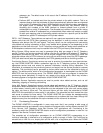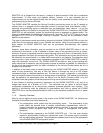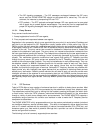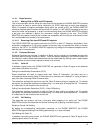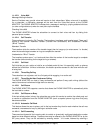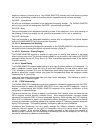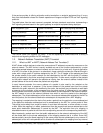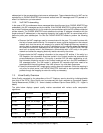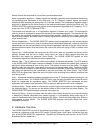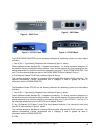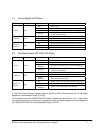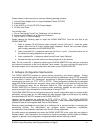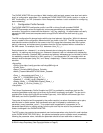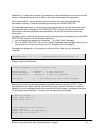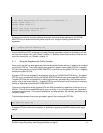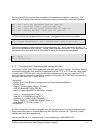
Several factors that contribute to Voice Quality are described below.
Audio compression algorithm – Speech signals are sampled, quantized and compressed before they
are packetized and transmitted to the other end. For IP Telephony, speech signals are usually
sampled at 8000 samples per second with 12-16 bits per sample. The compression algorithm plays a
large role in determining the Voice Quality of the reconstructed speech signal at the other end. The
PHONE ADAPTER supports the most popular audio compression algorithms for IP Telephony: G.711
a-law and µ-law, G.726, G.729a and G.723.1.
The encoder and decoder pair in a compression algorithm is known as a codec. The compression
ratio of a codec is expressed in terms of the bit rate of the compressed speech. The lower the bit rate,
the smaller the bandwidth required to transmit the audio packets. Voice Quality is usually lower with
lower bit rate, however. But Voice Quality is usually higher as the complexity of the codec gets higher
at the same bit rate.
Silence Suppression – The PHONE ADAPTER applies silence suppression so that silence packets
are not sent to the other end in order to conserve more transmission bandwidth; instead a noise level
measurement can be sent periodically during silence suppressed intervals so that the other end can
generate artificial comfort noise that mimics the noise at the other end (using a CNG or comfort noise
generator).
Packet Loss – Audio packets are transported by UDP which does not guarantee the delivery of the
packets. Packets may be lost or contain errors which can lead to audio sample drop-outs and
distortions and lowers the perceived Voice Quality. The PHONE ADAPTER applies an error
concealment algorithm to alleviate the effect of packet loss.
Network Jitter – The IP network can induce varying delay of the received packets. The RTP receiver
in the PHONE ADAPTER keeps a reserve of samples in order to absorb the network jitter, instead of
playing out all the samples as soon as they arrive. This reserve is known as a jitter buffer. The bigger
the jitter buffer, the more jitter it can absorb, but this also introduces bigger delay. Therefore the jitter
buffer size should be kept to a relatively small size whenever possible. If jitter buffer size is too small,
then many late packets may be considered as lost and thus lowers the Voice Quality. The PHONE
ADAPTER can dynamically adjust the size of the jitter buffer according to the network conditions that
exist during a call.
Echo – Impedance mismatch between the telephone and the IP Telephony gateway phone port can
lead to near-end echo. The PHONE ADAPTER has a near end echo canceller with at least 8 ms tail
length to compensate for impedance match. The PHONE ADAPTER also implements an echo
suppressor with comfort noise generator (CNG) so that any residual echo will not be noticeable.
Hardware Noise – Certain levels of noise can be coupled into the conversational audio signals due to
the hardware design. The source can be ambient noise or 60Hz noise from the power adaptor. The
PHONE ADAPTER hardware design minimizes noise coupling.
End-to-End Delay – End-to-end delay does not affect Voice Quality directly but is an important factor
in determining whether subscribers can interact normally in a conversation taking place over an IP
network. Reasonable delay figure should be about 50-100ms. End-to-end delay larger than 300ms is
unacceptable to most callers. The PHONE ADAPTER supports end-to-end delays well within
acceptable thresholds.
2. Hardware Overview
The PHONE ADAPTER has one of the smallest form factors on the market. It can be installed in
minutes as a table-top or wall mount CPE device. Figures Figure 2 and Figure 3 show the front and
rear, of the PHONE ADAPTER, respectively. Figures 4 and 5 show the front and rear, of the RT31P2
Broadband Router, respectively.
© 2004 Linksys Proprietary (See Copyright Notice on Page 2)
17



